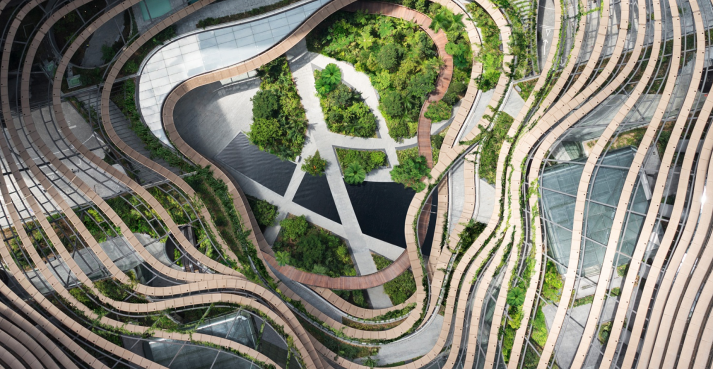Unknown Facts About Landscape Design
Unknown Facts About Landscape Design
Blog Article
Some Of Landscape Design
Table of ContentsLandscape Design Can Be Fun For AnyoneThe Basic Principles Of Landscape Design Little Known Facts About Landscape Design.What Does Landscape Design Do?
A yard can usually be separated right into 3 areas: public (the front yard), private (the back yard), and solution (usually the side lawn). The place of activity locations depends largely on the type of location, the size of room required, the type of task, and the desired proximity to various other tasks and frameworks.
The outside wall surface of the home typically serves as the first wall or beginning point of an outside room. Inappropriate usages should be divided, and related tasks, such as food preparation and dining, need to be created to make the yard much more reliable and satisfying. When utilizing hardscape to develop areas, use building and construction material similar to that utilized in your house for continuity from the home right into the garden.
Connected areas. Credit Scores: Gail Hansen, UF/IFAS Utilizing comparable hardscape functions and duplicating plants pulls the eye around the yard. Vital points along the means can be highlighted with plantings or attributes that attract attention and urge movement in a specific direction. Moving along the course takes an individual from one area to the following and enables the user to have a variety of experiences.
From a layout point of view, plant materials have 3 major features in the landscape: aesthetic, structural and practical. Cosmetically, plants produce a visually pleasurable setting and structurally plants organize and define spaces.
Landscape Design - Questions
For psychological comfort plants are used as physical or suggested obstacles for privacy and security. Physical obstacles block both the sight and access to a space and include fences, wall surfaces and plant hedges. Landscape Design. Suggested barriers, commonly low growing plants, block gain access to however not the sight (Figure 9). Various other features of plants include cleaning up the air, stopping disintegration and dirt loss, retaining wetness in the dirt, and returning natural matter to the soil.
Physical and suggested obstacles. Credit Score: Gail Hansen, UF/IFAS For these reasons, the kinds of plants to be used (such as trees, shrubs, or groundcovers) need to be selected in the onset of preparation. Plant types are picked for their practical abilities to ensure that their future purpose and required room can be considered at the same time.
The overhanging plane, the upright plane and the ground plane need to all be considered to create enclosure. Once the shape of a plant bed has been developed, the plants need to be massed (organized) and layered to achieve visual unity and the preferred amount of unit. The dimension of a plant mass will certainly rely on the total size of the yard, the dimension of the individual plants in the mass, and the focus or effect preferred from the plant product.
Each plant mass is in front of, behind, or alongside, an go right here additional mass. Number 11. Horizontal plant layers. Credit Report: Gail Hansen, UF/IFAS Figure 12. Vertical plant layers. Debt: Gail Hansen, UF/IFAS Repeating plants within a mass and repeating masses with similar plants ties the yard with each other. The individual plant features should be considered to successfully layer and mass plants.
How Landscape Design can Save You Time, Stress, and Money.
All plant structures start with the main structure plants, the big, mainly evergreen history plants-such as the trees and huge bushes. These plants separate or enframe areas, control the dimension of the area, and provide the starting point for choosing the proper features of the second layer, midground plants, for massing and infill.
Important points in the garden should be highlighted by the use one-of-a-kind plants, unique structures, or yard ornaments. Marking thresholds or entryways to spaces can be finished with entrances, arbors, and actions, or with making use of distinct and vibrant plants. The kind and/or design motif of the yard will certainly commonly aid identify the crucial factors and how they need to be highlighted.
Various other important places in the backyard he said are focal factors, which is used to aesthetically organize a landscaped area. Different perspectives or viewpoints can reveal different make-ups in the landscape that might call for a range of focal factors.
Landscape Design Can Be Fun For Everyone
Number 13. Plant forms. Credit Score: Gail Hansen, UF/IFAS After form, texture is the next leading function of a plant; coarse, tool and fine structures can be made use of for contrast and emphasis in the landscape. Type and appearance both trump color in the garden for the majority of the year. Throughout certain seasons, shade will certainly be the most noticeable attribute of the garden.


The enjoyable fragrance of plants, the sound of wind in the trees, the audio and structure of water, and the shades and textures of sculptures, pots and garden furnishings all contribute to the experience of the yard. One information that is frequently forgotten is the result of light on the aesthetics of the plants.
The whole yard adjustments in feature and appearance throughout the day, and the course of a year, as the light and temperature adjustment from early morning to night and period to period. Plant option should consider a plant's development rate, its mature size and kind, and the maintenance it will need.
It is very important to know the ultimate mature dimension of plants so they can be placed in the right place and spaced appropriately when they are set up. Providing plants area to grow is a challenge because the common fully grown size is typically based upon optimum growing conditions and the environmental conditions of a site might trigger a plant to expand bigger or stay i was reading this smaller.
Report this page